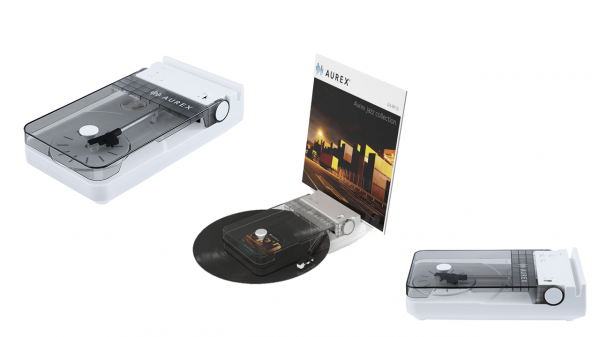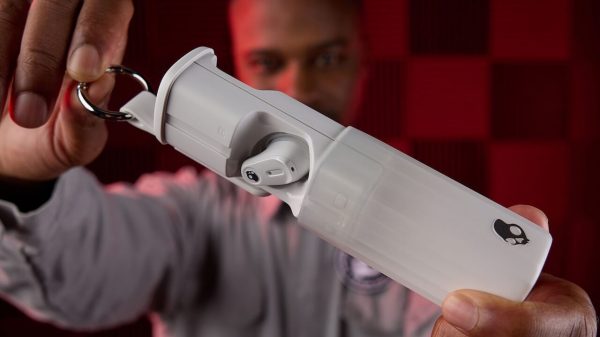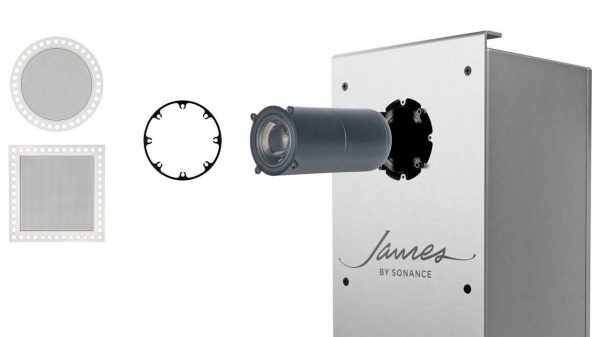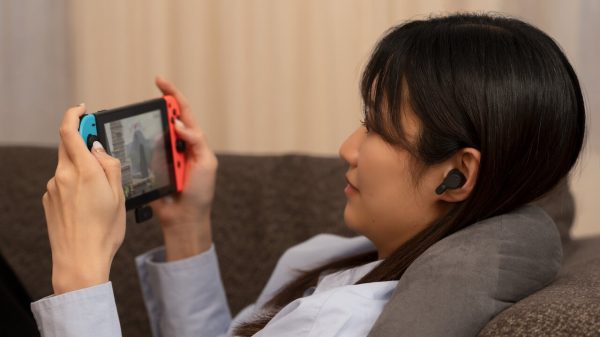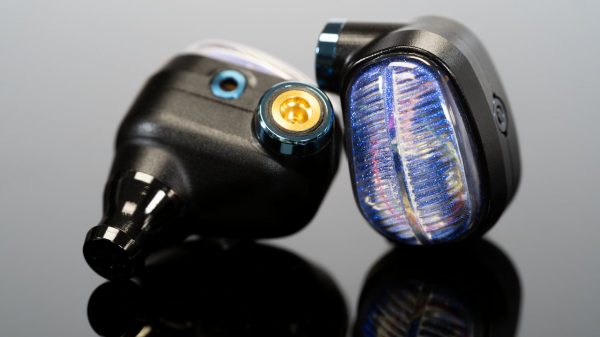September 4, 2008 — For Immediate Release
WOODBURY, NY — At CEDIA Expo 2008, JBL, Inc., is introducing its SDEC-4500 digital equalizer/crossover, a state-of-the-art component that operates in conjunction with the newly developed Harman Audio Test System to provide an unprecedented level of calibration accuracy in a JBL Synthesis multichannel audio system.
The SDEC-4500 and the Harman Audio Test System will be showcased in a live JBL Synthesis system presentation at the Colorado Convention Center, Booth 580 (September 4 — 7). The CEDIA demonstration also includes the company’s innovative Synthesis Array Module SAM1 midrange/high-frequency loudspeaker array and SAM2 low-frequency loudspeaker array, as well as additional JBL Synthesis custom-installation loudspeakers and subwoofers and high-end Mark Levinson electronics.
Following are highlights of the JBL Synthesis components that will be on exhibit.
JBL Synthesis SDEC-4500 Digital Equalizer: A New Standard in System-Calibration Accuracy
The JBL Synthesis SDEC-4500 is the most advanced digital equalizer ever offered by the brand. It optimizes the performance of a JBL Synthesis system in any room, using more than 200 bands of fully parametric digital equalization that can be adjusted from 1/100 octave to 4 octaves wide at +15dB to — infinity, between 20Hz — 20kHz, to correct dips and peaks throughout the frequency range.
In all rooms, there are powerful resonances that emphasize some frequencies and attenuate others. The
SDEC-4500 compensates for these irregularities with far greater precision than has ever been available before, to deliver extraordinary sonic accuracy that meets or exceeds the standards for professional theaters.
The SDEC-4500 is improved from previous models; it’s now capable of applying more precise equalization, with a greater number of adjustable frequency bands, to all of the main, center and surround loudspeakers in a home theater system, and to multiple subwoofers.
The SDEC-4500 also offers an easier-to-use PC “control panel” interface and numerous additional enhancements, including automatic arrival-time calibration for all the loudspeakers and drivers in a multichannel system; an improved Auto-Film-Screen-Compensation feature that automatically corrects for the attenuation in high-frequency output that can occur when a loudspeaker is located behind projection screens of various materials; automatic control capabilities with other JBL Synthesis components; and many other versatile features.
Because no two rooms are alike, the Harman Audio Test System, which interfaces with the SDEC-4500 (and other JBL Synthesis equalizers), allows a JBL factory-trained-and-certified technician to custom-fit the sound of a Synthesis system to the room in which it is installed.
The Harman Audio Test System is a powerful 16-channel audio analyzer optimized for measuring loudspeaker and room interactions. The analyzer can be configured for either eight-input/eight-output operation, which is ideal for calibrating home theater systems, or for 12-input/four-output operation, which is well suited for use in an anechoic chamber or for car-audio-systems development.
The Harman Audio Test System uses multiple microphones (eight for a JBL Synthesis system) to measure different locations in a room, and applies proprietary digital-signal processing to analyze and correct for the room’s frequency dips and peaks.
The Harman Audio Test System supports 48kHz and 96kHz sample rates, with 20-bit resolution. Its input channels can be used as microphone inputs (with phantom power), or as line-level inputs. All 16 channels of A/D and D/A conversion take place in the Harman Audio Test System hardware, which interfaces with a PC and an SDEC-4500 (or other compatible JBL Synthesis digital equalizer) via Ethernet connections.
When used in a JBL Synthesis system, the Harman Audio Test System enables the achievement of flat in-room frequency response, or frequency correction to any desired target curve. Additional functions include automatic crossover optimization between the main speakers and the subwoofers in a multichannel system; automatic loudspeaker-level calibration; and a newly developed sound field management algorithm that minimizes the seat-to-seat variation in bass response in a home theater system to a far more effective degree than do other hardware and software solutions.
JBL Synthesis Loudspeakers: Extraordinary Sonic Accuracy and Installation Flexibility
The JBL SAM1 midrange/high-frequency array and SAM2 low-frequency array loudspeakers, which are included in a number of Synthesis complete multichannel audio systems, and the SAM3HA and SAM3VA Synthesis Array Module horizontal and vertical loudspeakers incorporate advanced engineering and materials and bring the configurable installation versatility of the company’s acclaimed VerTec professional audio loudspeakers to home listeners.
The SAM1, SAM3HA and SAM3VA share many of the driver technologies — including proprietary Bi-Radial horns that are mated with an aluminum midrange and pure-titanium compression drivers — of the brand’s reference-standard Project Array and K2 Series loudspeakers. The Bi-Radial horns incorporate their midrange/high-frequency and ultrahigh-frequency transducers into a unified horn assembly. This design optimizes the horn’s dispersion and tonal accuracy, both on- and off-axis, and delivers extended high-frequency response to beyond 40kHz.
The SAM2 employs dual 8-inch woofers that utilize exclusive JBL Metal Matrix technology, in which the aluminum woofer cones are deep-anodized to produce rigid yet lightweight driver diaphragms, providing exceptional articulation. The SAM1 and SAM2’s modular design enables them to be easily attached together to create loudspeaker arrays in a variety of configurations.
The Synthesis system featured at CEDIA also includes the S4Ai multipolar in-wall surround-effects loudspeaker, which can be switched to bipole, dipole or direct-radiating operation for optimum surround reproduction in any home theater system, and the S1S-EX subwoofer, which features a massive 18-inch woofer with true, deep bass extension all the way down to 18Hz.
The Mark Levinson components used in the CEDIA JBL Synthesis demonstration include the N𭢆 media console, the N𭢤 stereo power amplifier, the N𭡁 triple-monaural amplifier and the N䣝 reference monaural power amplifier. Mark Levinson audio/video components are designed and built to the highest standards in the industry, to deliver the ultimate in audio and video performance.
About JBL, Inc.
JBL is a unit of Harman International Industries, Incorporated (www.harman.com). Harman International designs, manufactures and markets a wide range of audio and infotainment products for the automotive, consumer and professional markets, and maintains a strong presence in the Americas, Europe and Asia, employing more than 11,000 people worldwide. The Harman International family of brands includes AKG, Audioaccess, Becker, BSS, Crown, dbx, DigiTech, Harman Kardon, Infinity, JBL, Lexicon, Mark Levinson, Revel, QNX, Soundcraft and Studer. Harman International’s stock is traded on the New York Stock Exchange under the symbol “NYSE: HAR.”
# # #
JBL, Synthesis, JBL Synthesis, Mark Levinson, VerTec, Bi-Radial, K2, AKG, Audioaccess, Becker, BSS, Crown, dbx, DigiTech, Harman Kardon, Infinity, Lexicon, Revel, QNX, Soundcraft and Studer are trademarks of Harman International Industries, Incorporated, registered in the United States and/or other countries. Harman, Array, and Project Array are trademarks of Harman International Industries, Inc.
© 2008 Harman International Industries, Incorporated. All rights reserved.

